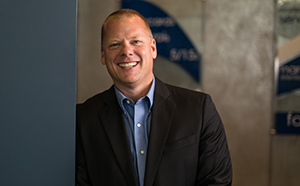In the early morning of April 15, 1912, the British passenger ship RMS Titanic sunk in the North Atlantic Ocean. The Titanic was dubbed the “unsinkable” ship, but it sank shortly after hitting an iceberg that tore through its hull below the waterline on its maiden voyage.
Only 10% of the iceberg was visible above the waterline, while 90% of it lurked deceptively below the waterline.
The iceberg principle simply says that when confronted with a situation, only 10% of the information is easily visible and is “above the waterline,” while the other 90% is hidden beneath the surface. But it’s the 90% that can sink you.
I’ve observed the iceberg principle at play in many areas of business. Here’s one:
At SEI, our leaders coach the people they’re entrusted with leading. And on the rare occasion that there are performance issues with an employee, we have a responsibility as leaders to coach them up or to coach them out.
I’ve seen too many leaders at other organizations shrink away from that responsibility. This is one of the most fundamental and impactful responsibilities a leader can have on their team and on their organization. Instead, they try to move employees around, or they simply pass them on to another manager because they don’t want to confront the situation head on. Ultimately, they allow C-players to drive away A-players and even customers.
When a person chooses not to change, it’s incumbent on a leader to make a change.
I’ve found that in almost every situation I’ve been involved in, where we’ve had to coach an individual out, we experience the iceberg principle. The performance problems we observed were often only 10% of the problems that were actually festering. It was not until we made a move that we discovered we weren’t even aware of 90% of the problems that were actually there, lurking below the surface.
We live in a time in which people celebrate a healthy culture in the workplace, and rightfully so. But a healthy culture is not one where everyone automatically has a place at the table. A healthy culture is one that protects and guards the team by filling it with the right people and making sure that they’re in the right seats.
And that can mean understanding early on that the problems we observe are often only a fraction of what’s going on at a deeper level. It’s our job as leaders to recognize that and to look deeper and to take action before our ship gets sunk.

